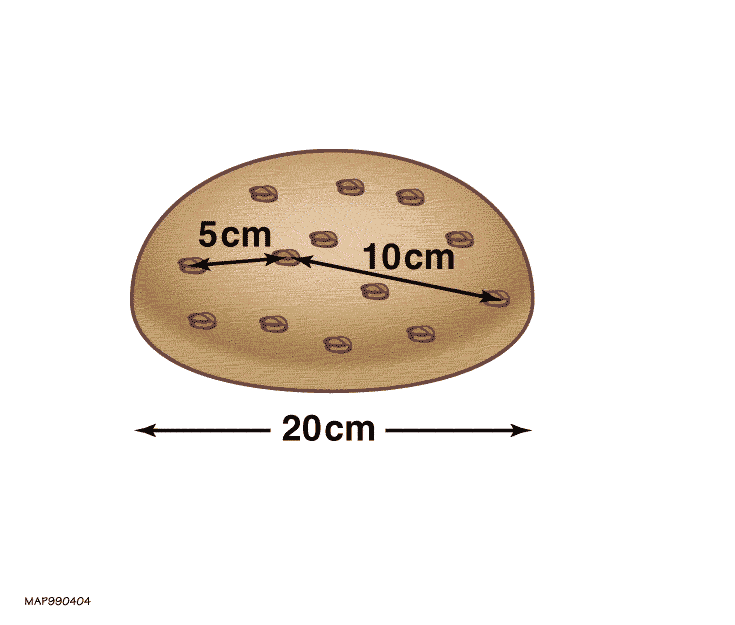
Caption: An animation illustrating that the expansion of an IDEAL loaf of raisin bread when being baked is analogous to the expansion of the universe.
Yours truly is pretty sure real raisin bread does NOT just scale up when baked---but it can be eaten later.
Features:
-
The raisins are like
gravitationally-bound systems
and other
bound systems
(like you and me).
They don't expand.
- The basic idea is that all
cosmological proper distances
(i.e., just ordinary distances measured at one instant in time)
between
gravitationally-bound systems
(and other
bound systems)
grow with
cosmic time
(with time zero at the Big Bang) by the
cosmic scale factor a(t),
where t is cosmic time.
- The growth of the
cosmological proper distances
is a literal growth of space
according to general relativity.
-
The cosmic scale factor a(t)
is common to all growing
cosmological proper distances.
So the structures defined by these cosmological proper distances just scale up with time.
By convention, a(t=t_0) = a_0 = 1, where t_0 is present cosmic time.
- At time zero of cosmic time,
the cosmic scale factor is zero:
i.e., a(t=0) = 0.
The theoretical time zero is the big bang singularity when the observable universe had zero size and infinite density.
Actually, no one believes that we can run our cosmological models back to the big bang singularity.
The observable universe is thought to track into one of those cosmological models a tiny fraction of second after the theoretical time zero (see Wikipedia: Graphical timeline of the Big Bang).
What came before that tiny fraction of second? That is a story for another figure caption.
- What is the universe expanding into?
If the spatial geometry of the whole universe is hyperspherical, then NOTHING. In this case, the universe has the geometry of a 3-dimensional surface of a 4-dimensional n-sphere (AKA hypersphere)---this object is called a 3-sphere (glome).
The 3-dimensional surface is a finite region with no boundary and the surface is growing with cosmic time.
The 2-dimensional analogue is the 2-dimensional surface of a growing ordinary sphere.
We do NOT notice the curved nature of space because we're microbes on a beach ball---it looks flat (i.e., Euclidean) to us.
What is off the 3-dimensional surface of the 3-sphere? General relativity does NOT say or imply in anyway that space is a 3-sphere in a 4-dimensional mathematical space